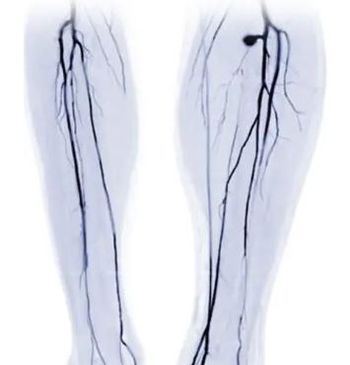
ICDs Reduce Risk of Sudden Death in Hypertrophic Cardiomyopathy
MINNEAPOLIS -- Presence of just a single risk factor for sudden death may justify implantation of a cardioverter-defibrillator (ICD) in high-risk patients with hypertophic cardiomyopathy, researchers here found.
MINNEAPOLIS, July 26 -- Presence of just a single risk factor for sudden death may justify implantation of a cardioverter-defibrillator (ICD) in high-risk patients with hypertophic cardiomyopathy, researchers here found.
Data analysis showed that defibrillators effectively converted ventricular tachyarrhythmias to normal sinus rhythm in 20% of patients, according to a report in the July 25 issue of the Journal of the American Medical Association.
Intervention rates were 10.6% per year for secondary prevention after cardiac arrest, for a 5-year cumulative probability of 39%, said Barry J. Maron, M.D., of the Minneapolis Heart Institute Foundation.
Intervention rates for primary prevention were 3.6% per year, for a 5-year probability of 17%.
Only in the last few years have ICDs been used to prevent sudden death in patients with hypertrophic cardiomyopathy, Dr. Marron said. But its effectiveness and appropriateness as prophylactic therapy have yet to be documented.
So Dr. Maron and colleagues reviewed data from a multicenter registry of ICDs implanted between 1986 and 2003 in 506 patients with hypertrophic cardiomyopathy. Three-quarters of the patients had the device implanted for primary prevention.
Mean age of the patients was 42 years at the time of implantation. Nearly all (87%) were asymptomatic or had only mildly limiting symptoms. There was a mean follow-up of 3.7 years.
Risk factors for sudden death included family history of sudden death, massive left ventricular hypertrophy, nonsustained ventricular tachycardia on Holter monitoring, and unexplained episodes of syncope.
There were 51 patients who had appropriate ICD interventions. Eighteen (35%) of the 51 had received ICDs for a single risk factor. The likelihood of appropriate discharge was similar in patients with a single risk factor or multiple risk factors, ranging from 2.65 to 4.82 shocks per 100 person-years.
There was one sudden death due to an uncorrected arrhythmia, and in this case, there was an ICD malfunction. Inappropriate shocks were delivered in 136 patients (27%).
"The results of this international, multicenter study show the effectiveness and reliability of the ICD in prevention of sudden cardiac death in high-risk patients with hypertrophic cardiomyopathy," the investigators wrote.
Since a significant percentage of the shocks were delivered in patients with ICDs for primary prevention, "?a single marker of high-risk status may justify consideration for a primary prevention defibrillator in selected patients," they concluded.
In an accompanying editorial, Rick A. Nishimura, M.D., and Steven R. Ommen, M.D., of the Mayo Clinic College of Medicine in Rochester, Minn., offered a word of caution.
They write that "?the decision to implant an ICD in any patient, especially one with a single risk factor, must include a thorough and earnest discussion of the accuracy of the current risk assessment tools, the risks and benefits of ICD therapy, and the individual patient's viewpoints on procedures, devices, and death. Such an approach will allow the patient-physician team to arrive at an individualized decision regarding ICD implantation."
Newsletter
Enhance your clinical practice with the Patient Care newsletter, offering the latest evidence-based guidelines, diagnostic insights, and treatment strategies for primary care physicians.































































































































































































































































































